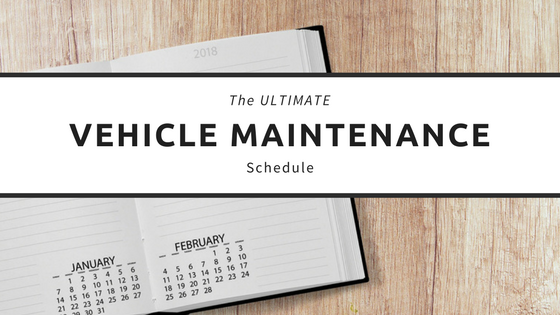We all know that taking care of a vehicle can be a lot of work.
With so many components requiring attention, most of them very complex, it can be hard to understand exactly where to start or how often to invest in vehicular maintenance.
Some of the things our vehicles need are easy to check for. Many of the tasks we dread doing or feel confused about only need to be done every few months or even once a year. Other tasks should be done weekly or monthly just to be on the safe side.
All of these good habits combined with the right timeline makes for a vehicle maintenance schedule that can help any car perform better and last longer.
The Simple Maintenance: Perform Weekly or Monthly
There are some types of vehicular maintenance that we should all keep a close eye on. While some car owners are meticulous enough to handle the regular, recurring needs of their vehicle weekly, they should be checked no less than once a month.
Maintenance types in this category include simple things like checking to see if the check engine light is on, and cleaning both the exterior and interior of the vehicle. You should also check the tire pressure and tread at least once per month to be on the safe side. Though simple enough to be handled without heading to the garage, these types of maintenance can have a big impact on a vehicle’s long-term performance.
The Detailed Maintenance: Perform Every 3-6 Months
Or every 3,000-6,000 miles – whichever comes first. Some of these tasks you may be able to do yourself, but others may require you to seek help from professional mechanics.
These maintenance habits are a bit more involved, but the tradeoff is they don’t need to be done as often. Every few months, you should consider checking your fluids – this includes transmission, power steering, and windshield washer. You should also check to make sure battery cables, belts, and hoses are secure and functioning correctly.
Polishing and waxing are also advised in this timeframe. The effects will last a while and can help ensure the vehicle doesn’t succumb to exterior damage as easily from excess moisture, sap, and other hazards.
The Heavy-Duty Maintenance: Perform Every 9-12 Months
These are the types of maintenance habits that can be handled every nine months, or even once a year. It’s also possible to gauge these habits by miles instead of months, meaning you shouldn’t go more than 12,000 miles without having this maintenance done.
Check to make sure your brakes are in good condition and that your engine’s oil and filters are in good shape. You should also have your suspension and alignment checked. While some people like to handle the maintenance on their own cars, big tasks like these usually require a trip to the mechanic.
To find out more about vehicular maintenance and the products you can use to keep your car looking and running great, contact Berryman Products today!

